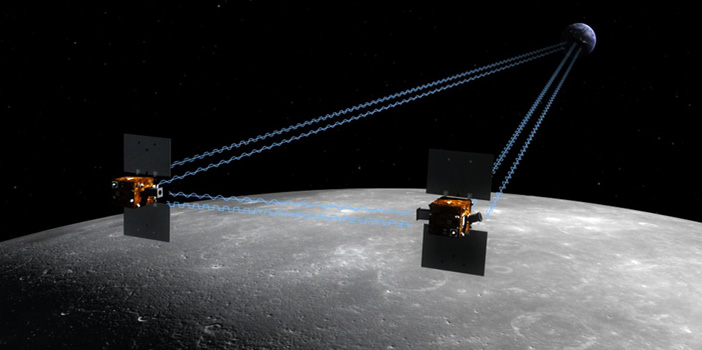NASA is shooting for the moon again, this time with two tandem satellites that will work together to create the first full map of lunar gravity and the most comprehensive survey yet of lunar geology.
And in a twist, the satellites are also each carrying a MoonKAM, NASA’s first-ever equipment dedicated to solely to educational outreach, which will allow middle school students around the country to make special requests of which areas on the moon the satellites should photograph while they’re up there.
After launch was postponed twice on Thursday and Friday morning due to weather delays, the Gravity Recovery and Interior Laboratory mission (GRAIL) finally enjoyed a picture perfect launch from Cape Canaveral, Fla. at 9:08 a.m. ET Saturday.
Twin gravity-measuring satellites GRAIL-A and GRAIL-B, each about the size of a washing machine, blasted off aboard a United Launch Alliance Delta II rocket.
But they’ve now separated from the rocket and are each heading on a long, three-and-a-half month journey to the moon, set to arrive in the Moon’s orbit on December 1, 2011 and January 1, 2012, respectively. Then, they’ll spend a few months adjusting their orbits for the 82-day-long gravity-mapping mission slated to begin March 8, 2012.
Throughout the mission, the two spacecraft will trace the same orbit around the moon’s poles, bobbing up and down in altitude and coming slightly towards and away from each other but never touching, like two cars in the same lane (with GRAIL-A leading the way, of course). All the while, they’ll be communicating with each other via radio signal.
As they do so, they will each measure changes in their relative velocity with uncanny precision – down to a distance the diameter of a red blood cell, allowing them to detect the gravitational effects of specific features of the moon’s crust, from craters to mountains.
As the spacecraft bob up in altitude, the satellites’ instruments will be able to measure “global gravitational effects,” revealing features of the moon’s core and mantle. At a more moderate altitude, the GRAIL twins will be able to detect features of the moon’s mantle.
The project is expected to give scientists answers to some of the moon’s most vexing mysteries: Namely: was it formed from the collision of two moons? Also, how did lava from ancient lunar volcanoes flood one region, but did not extend elsewhere?
But really, it’s middle school students that will probably enjoy the ride the most, as they’ll be able to request that the spacecraft take photos of specific areas of the moon. Teachers can register their classes to participate at the MoonKAM website here. (h/t Wired.)
The mission cost $496 million and is designed to be the first chapter in a new phase of deep space exploration for NASA using synchronized spacecraft. One future scheme could involve putting 30 spacecraft in a line to form an enormous, discontinuous telescope, according to the Los Angeles Times..
But until then, you can follow this mission on Twitter and on a dedicated iPhone App.









